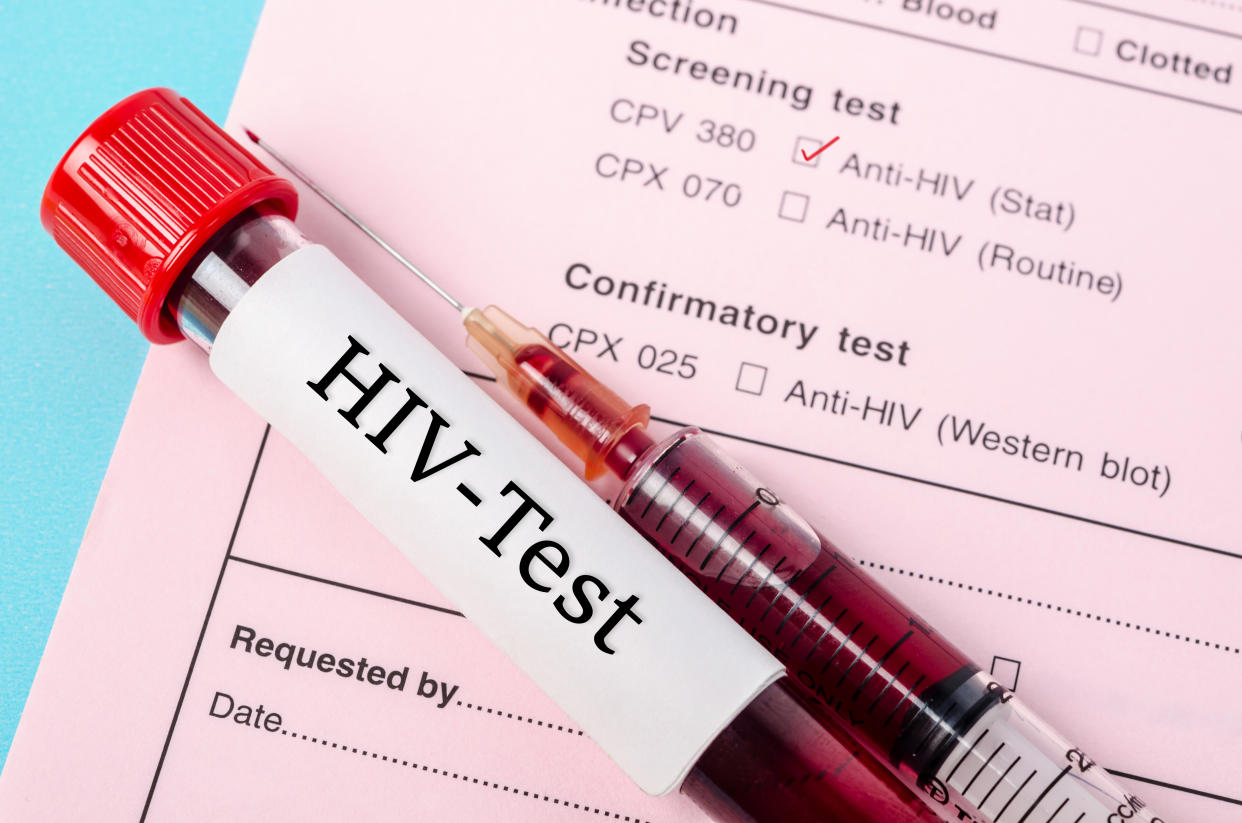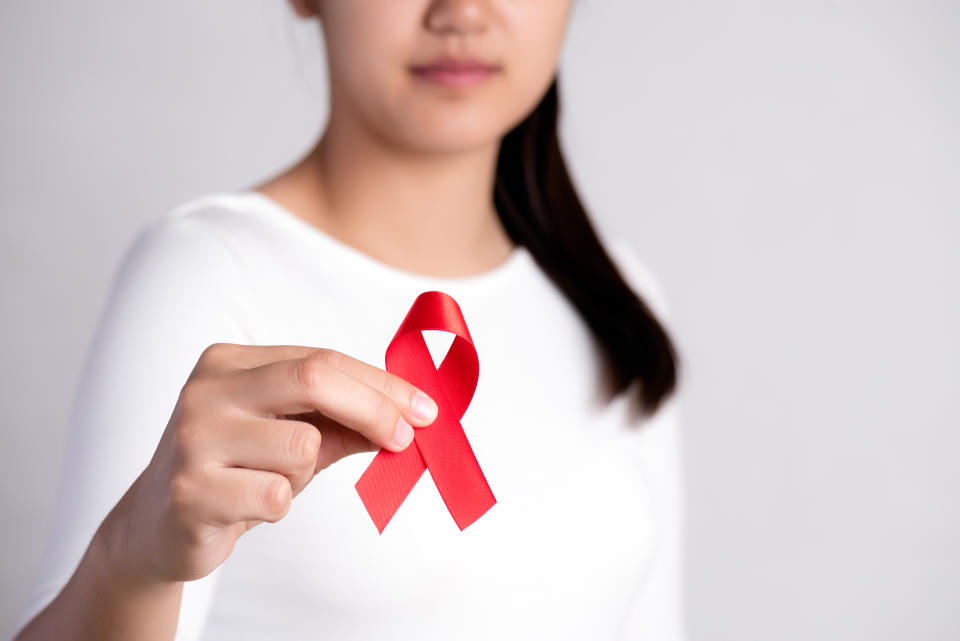Woman's immune system may have cured her of HIV without stem cell transplant, study suggests

A woman may be the first person to be cured of human immunodeficiency virus (HIV) without enduring a gruelling stem cell transplant, research suggests.
Loreen Willenberg, 66, from California, was infected with the sexually-transmitted virus in 1992.
An “elite controller”, Willenberg is one of the less than 0.5% of patients whose immune system can suppress the infection without antiretroviral therapy (ART) drugs.
HIV typically lies dormant in cells where it cannot be wiped out by medication or the immune system. ART helps to suppress the virus, but it reactivates if a patient stops taking the therapy.
The unnamed “Berlin patient” was the first to be “cured” of HIV following a stem cell transplant. This was later replicated in Adam Castillejo, “the London patient”.
Read more: Doctors 'not convinced' HIV patient cured by antiviral drugs and B vitamin
Castillejo had the transplant as a last resort and it led to him enduring multiple infections, hearing loss and mouth ulcers so severe he was barely able to take his medication.
Willenberg is well known among HIV specialists after she was found to suppress the virus decades after diagnosis.
After looking at 1.5 billion of Willenberg’s blood cells, scientists from Massachusetts General Hospital found no trace of the virus, despite her not being on ART.
One expert said she “could be added to the list of what I think is a cure”, however, another stressed more evidence is required.

Elite controllers are ‘highly atypical’
The Massachusetts scientists looked at 64 elite controllers, as well as 41 patients on ART.
“Unlike ART-treated individuals, elite controllers’ viral reservoirs appear to be incapable of being reactivated,” they wrote.
“This likely helps the elite controllers maintain spontaneous, drug-free control of HIV and may represent a distinguishing feature for a functional cure of HIV infection.”
Read more: Second patient cured of HIV after stem cell transplant
Upon infection, HIV replicates its genetic material into a patient’s cell, creating viral reservoirs where it can persist.
If a complete copy of the virus is incorporated into a cell’s genetic material, it can create new copies of HIV.
This is suppressed by ART, however, if a patient stops taking the therapy, the HIV copies replicate. The reservoirs are therefore considered a major obstacle to a cure.
In elite controllers, however, the patient’s immune system manages the virus without ART, to the point where it is completely undetectable.
Better understanding of how their immune systems achieve this could one day lead to a cure, eliminating the need for daily ART, according to the scientists.
The therapy has been linked to fractures, central nervous system disorders and heart disease, to name a few complications.
Read more: Sexual health service sees spike in demand as lockdown eases
To learn more about elite controllers, the scientists mapped the viral reservoirs of the 64 participants.
They found the patients’ HIV was often in so-called gene deserts; inactive parts of a human’s genetic material where DNA is never “turned on” and HIV cannot be expressed.
This “locks” HIV in a cell’s DNA, where it is unable to create copies.
“This positioning of viral genomes in elite controllers is highly atypical, as in the vast majority of people living with HIV, HIV is located in the active human genes where viruses can be readily produced,” said lead author Dr Xu Yu.

‘Added to the list of what I think is a cure’
In a second part of the experiment, the scientists collected cells from the elite controllers, before infecting them with HIV in the laboratory.
Results – published in the journal Nature – suggest the virus integrated into active sites in the cell’s genetic material, not the gene deserts.
This implies the elite controllers’ unique virus response may be a result of their immune system eliminating the virus’ genetic material from the active sites of a cell.
The scientists were particularly taken aback by Willenberg, who had no intact HIV in more than 1.5 billion cells.
Millions of cells from her gut, rectum and intestine also showed no signs of the virus.
The scientists wrote this “raises the possibility that a sterilising cure of HIV infection, which has previously been observed only following allogeneic haematopoietic stem cell transplantation, may be feasible in rare instances”.
Willenberg has been studied by scientists for more 15 years. With the exception of one test several years ago that detected a small amount of the virus, researchers have never identified HIV in her tissues.
“She could be added to the list of what I think is a cure, through a very different path,” Dr Sharon Lewin from the Peter Doherty Institute for Infection and Immunity in Melbourne told The New York Times.
She stressed Willenberg’s immune response is unique, however, adding: “The real challenge, of course, is how you can intervene to make this relevant to the 37 million people living with HIV.”
Another expert was more skeptical.
“I need to see more before I would say, ‘Oh, she’s cured’,” said Dr Una O’Doherty from the University of Pennsylvania.
This is not the first time a study has suggested an HIV patient was cured without a stem cell transplant.
In July, medics from the University of São Paulo claimed a man showed no sign of the virus after taking a cocktail of antiviral drugs and a B vitamin. Other experts, however, were “not convinced”.
Is HIV considered curable?
Although HIV is generally considered incurable, a daily dose of ART enables patients to live “longer, healthier” lives, while reducing the risk they will pass the virus on via unprotected sex.
The goal of the therapy is to lower a patient’s viral load to an undetectable level, meaning the quantity of the virus in their blood is too low to be picked up in a test.
These patients have “effectively no risk of transmitting HIV to their HIV-negative partners through sex”.
HIV damages immune cells, preventing them from fighting off everyday infections, like colds.
Nearly all (97%) patients on antiretroviral therapy in the UK are “[HIV] virally suppressed”.
Left untreated, HIV can develop into acquired immune deficiency syndrome (Aids).
This occurs when the immune system is so severely damaged, the patient is at risk of life-threatening infections and diseases.
A stem cell transplant has therefore been suggested for patients requiring a “last resort”.



